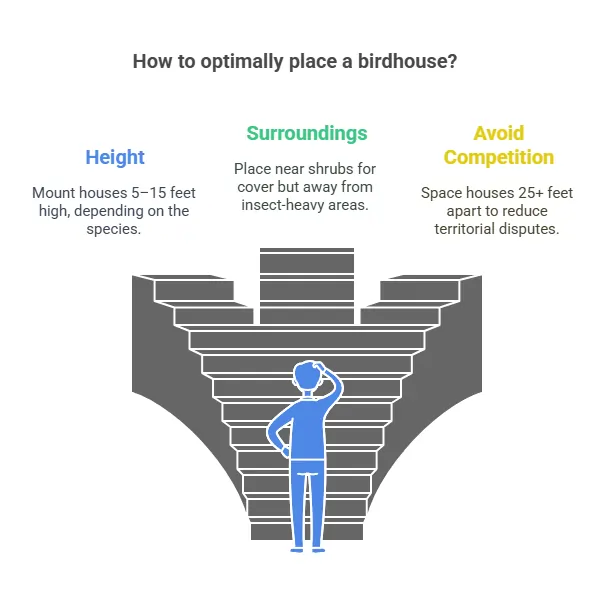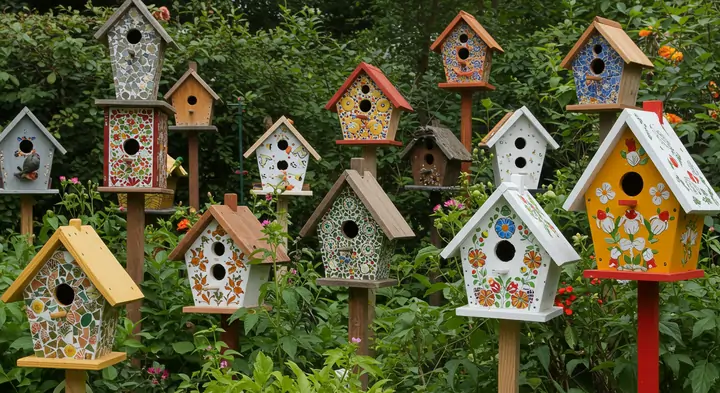There’s something magical about stepping into a garden adorned with decorative bird houses. These charming structures aren’t just eye-catching additions to your outdoor patio or yard—they’re tiny sanctuaries that invite wild birds to nest, sing, and thrive. Whether you’re a seasoned bird lover or a casual gardener looking to add whimsy to your space, understanding the balance between aesthetics and functionality is key. Let’s explore how to choose, style, and maintain decorative birdhouses that delight both you and your feathered neighbors.
Why Decorative Bird Houses? More Than Just Garden Décor
Decorative bird houses bridge the gap between art and ecology. While a standard nesting box prioritizes function, a handmade birdhouse with a painted bird motif or a rustic log cabin design adds personality to your garden. According to NestWatch, even ornamental houses can support local bird populations if designed thoughtfully. The trick is balancing style with features that keep birds safe, like proper ventilation, drainage, and predator-proofing.
For example, a wooden decorative house topped with western red cedar shingles might look like a fairytale cottage, but its sturdy construction and 1.5-inch entrance hole also make it a practical home for chickadees or wrens. On the other hand, a metal bird house shaped like a lighthouse could dazzle on your porch, but without insulation, it might not appeal to nesting birds.
Materials Matter: Wood, Metal, and Handmade Charm
When selecting a birdhouse, material choice impacts both durability and appeal. Here’s a quick comparison:
| Material | Pros | Cons | Best For |
|---|---|---|---|
| Western Red Cedar | Naturally weather-resistant, insulates well | Higher cost | Bluebird bird houses, long-term use |
| Pine | Affordable, easy to paint | Prone to rot without treatment | DIY projects, seasonal décor |
| Metal | Modern look, heavy duty | Poor insulation, heats in sun | Decorative accents, butterfly feeders |
| Reclaimed Wood | Eco-friendly, rustic charm | May require reinforcement | Handmade birdhouses, cottage gardens |
Wooden bird houses remain the gold standard for functionality. Cedar and pine are popular for their natural resistance to insects and rot, especially when fixed to a fence post or pole. For a pop of color, hand-painted designs on wooden surfaces can attract species like finches or cardinals, though experts recommend avoiding bright hues that might deter cautious birds (Birds & Blooms).
Meanwhile, metal bird houses—think sleek barn silhouettes or floral-embellished feeders—add modern flair but work best in shaded areas to prevent overheating.
Read More https://ahouseinthevalley.com/convert-120mm-to-inches/
Design Tips: From Cozy Nooks to Whimsical Wonders

Whether you prefer log cabin simplicity or a colorful lighthouse-themed piece, design choices should cater to both birds and your personal taste.
- Entrance Size Matters:
- 1.25-inch hole: Perfect for chickadees and wrens.
- 1.5-inch hole: Ideal for bluebirds and swallows.
- 2.5-inch hole: Welcomes purple martins (but also invites predators).
- Roof Line & Drainage: A sloped roof with shingle detailing doesn’t just look quaint—it directs rainwater away. Add drainage holes to prevent flooding (House Digest).
- Go Vertical: Hanging bird houses from trees or mounting them on pole systems keeps nests safe from raccoons. Bonus: They double as garden art!
For suburban gardens, consider a bluebird bird house with a fixed fence post mount. Pair it with a bird feeder and native flowers to create a cozy hub for wild birds.
DIY Magic: Crafting Handmade Birdhouses
Nothing beats the charm of a handmade creation. Upcycle old wooden planks into a cottage-style house, or transform a metal tin into a whimsy butterfly sanctuary. Here’s how to start:
- Materials: Use western red cedar and decorated scraps for durability.
- Paint: Opt for non-toxic, hand-painted designs—think floral patterns or rustic stripes.
- Extras: Add a porch with a tiny railing or a shingle roof for authenticity.
Websites like Craftidly offer tutorials for turning everyday items into decorative birdhouses. Pro tip: Involve kids in decorating—it’s a fun way to spark love for nature!
Placement Perfection: Where to Hang Your Birdhouse

Location is everything. Follow these guidelines to attract birds in your area:
- Height: Mount houses 5–15 feet high, depending on the species.
- Surroundings: Place near shrubs for cover but away from insect-heavy areas.
- Avoid Competition: Space houses 25+ feet apart to reduce territorial disputes.
A large bird house for purple martins should face open space, while a chickadee nest box thrives in wooded spots.
People Also Read https://ahouseinthevalley.com/green-sectional-couch/
Final Thoughts: Beauty Meets Purpose
Decorative bird houses are more than just yard decoration—they’re invitations to connect with nature. By choosing fully functional designs that prioritize size, ventilation, and species-specific needs, you create a haven for wild birds while enhancing your garden’s charm. Support small businesses selling handmade pieces, or dive into a DIY project to craft something uniquely yours.
Whether you opt for a painted bird masterpiece or a heavy duty cedar haven, remember: the best decorative birdhouses are those where beauty and purpose nest together perfectly.
Happy birding! 🐦

